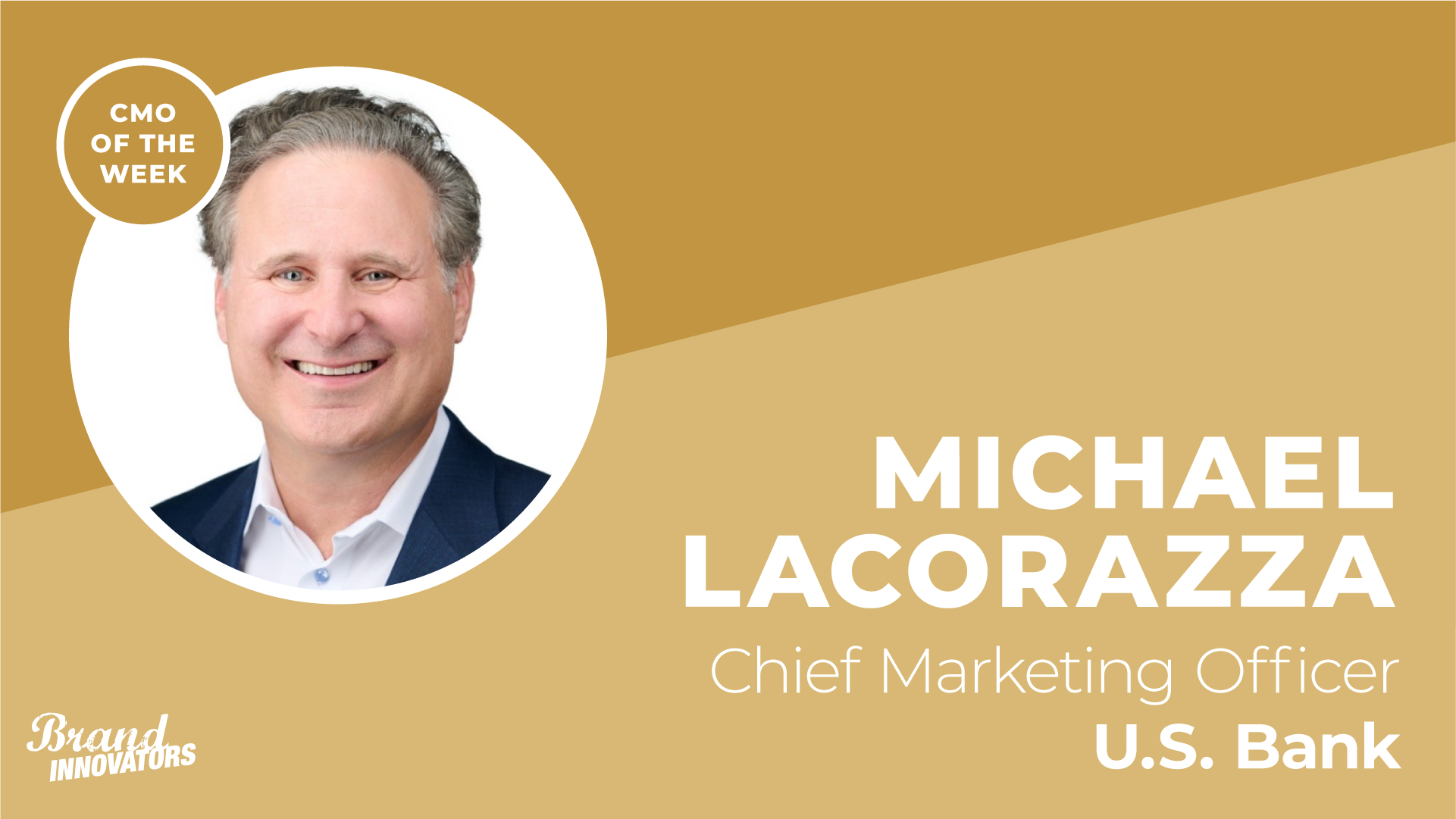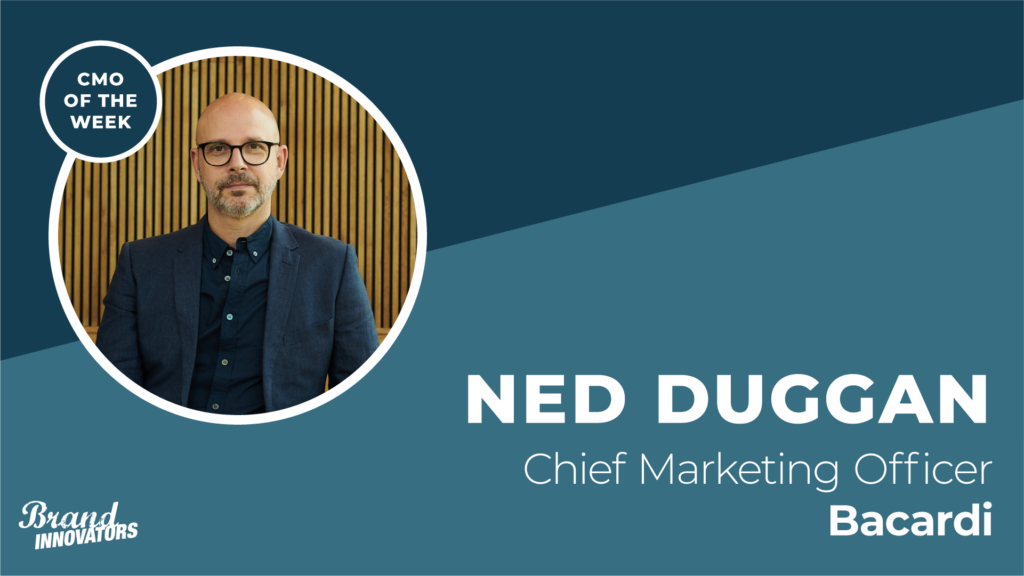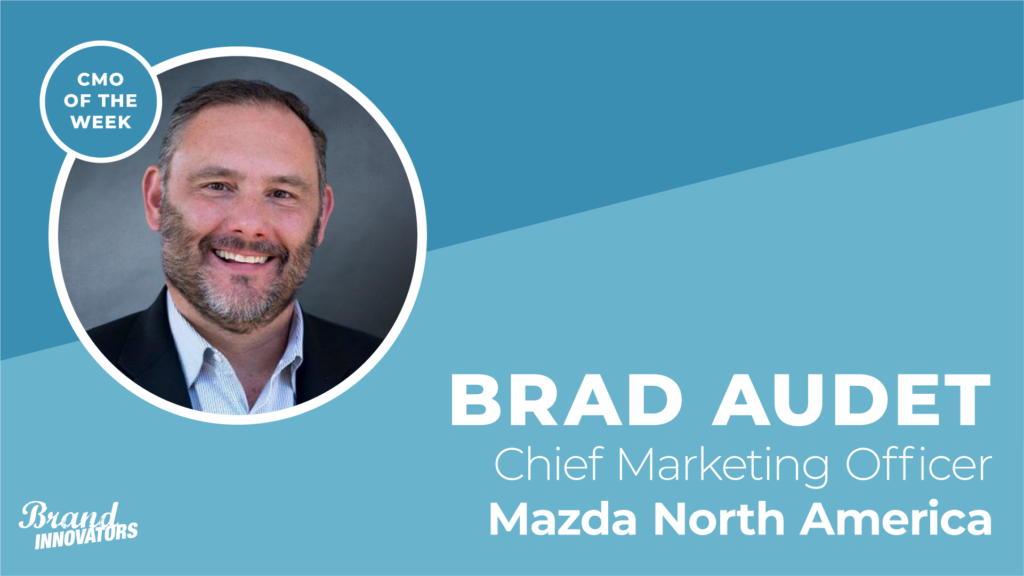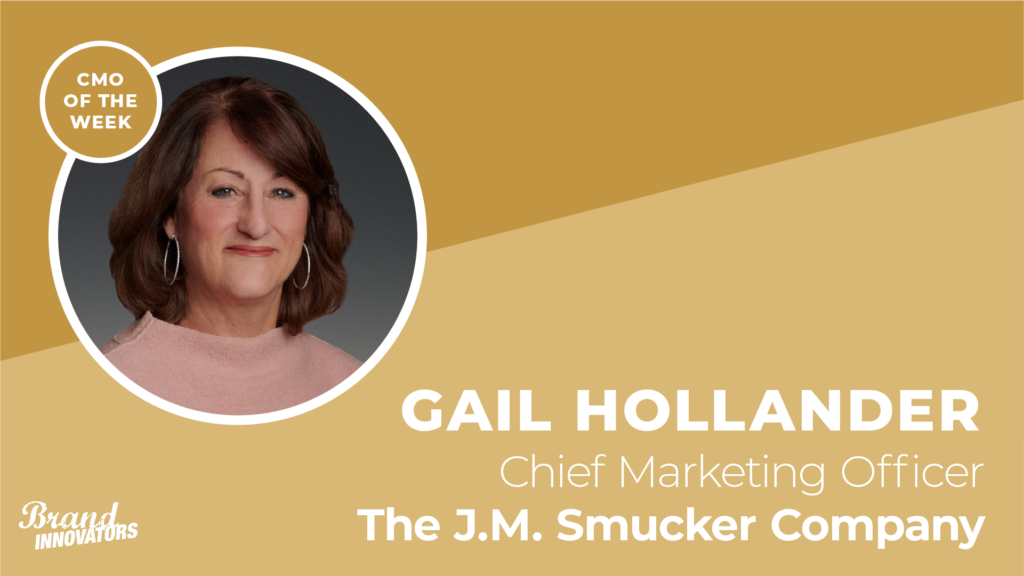Michael Lacorazza has done his best to select organizations that have a sense of purpose and a reason for being in the world. So when he was offered the job as chief marketing officer at the U.S. Bank last year, he jumped at the opportunity.
The financial institution is focused on the power of potential and supports consumers during important milestones in their lives. These events include opening a business, buying a house, starting a family and sending kids to college.
“The role that we play in our clients’ lives every day is a privilege,” says Lacorazza. “All of these moments matter, whether it’s purchasing a home or sending their kids to school or helping them manage their finances or investments. We’re here with the mission to support human potential. It’s something that we live every day in everything that we’re doing.”
The brand recently celebrated its 161 year anniversary and when Lacorazza took the helm of marketing, he was asked to evolve the company’s brand storytelling. “We realized that we had predominantly been only telling the side of our story that deals with the mass market retail segment – traditional banking,” says Lacorazza.
“But the way the organization has evolved over the years – especially now with some acquisitions that we had with Union Bank and other types of businesses that we’re in – we serve a much broader need than retail business. We have wealth management, commercial banking and a big middle market presence, as well. We should be defining ourselves in a much broader way with a much broader palette of how we do our storytelling.”
In May, the company debuted “The Power of Us,” which highlights the connection the bank has to consumers in their daily lives by financially supporting customers to live out their dreams. The idea behind this campaign is to show personal stories between banker and customer.
Brand Innovators caught up with Lacorazza from his office in Minneapolis to talk about modernizing a 161 year-old brand, navigating inflation and working with Simone Biles. This interview has been edited for length and clarity.
Can you talk about modernizing the brand?
Part of our modernization existed when I first joined. We had this opportunity to be more specific about the customer experience and the products and services that make us special and unique but the work that immediately preceded me was maybe a little bit too esoteric. We were trying to communicate a benefit – that we listen – in a clever way of saying that we listen instead of saying, hey, we’ve got this amazing service called co-browse.
You can get help with one of our bankers live on our website or app. They can see what’s on your screen and help you navigate through the experience. If you have something complex that you’re trying to do we can actually see what the client is seeing and walk them through the experience. We have those kinds of differentiated experiences and the opportunity was to present those in a more direct way as a reason to choose us and to showcase how we power their potential.
Can you talk about your approach to culture and how you’re integrating the brand into the current culture?
In our wealth management space, we have an ad with a multi-generational family where the grandparents started a business. We help them navigate through starting and growing their business and then ultimately selling it so that they can live their best lives afterwards with the family at their house playing pickleball. We’re incorporating some cues into the work that shows that we understand the things that are evolving in people’s lives that are universal. We are trying to find subtle things that tie into culture.
To celebrate 100 years of the Harlem Renaissance – an important era in Black history –.we’re doing some events that focus on legacy and on growing Black wealth. It’s a celebration of Black history and its impact on American culture at large, as well as, recognition of that community as a driving force and importance in the work that we do.
We are also working with Simone Biles and her sister on a cash back rewards credit card campaign around The Olympics. She’s going to be featured in marketing for our products during the Olympic cycle. It’s another subtle example of finding a way to be culturally relevant. We’re not an Olympic sponsor but we have a way to tap into the moment in time where America is watching The Olympics.
How is the banking category transforming and what are you doing to keep up?
We have an opportunity to be more nimble and get to market faster with our campaigns. The marketplace is so dynamic in terms of client demands and needs. If you use a legacy approach to things, it could take you months and months to get something significant into the market and by the time you do that, then you may have missed the moment.
We’re looking at ways that we can accelerate the work and get to market faster. We did that with this brand campaign with the use of AI models and avatars that were proxies for our audiences. The agency trained these models using various data sources to query different strategic questions in the foundation so we could get to the brief faster.
Ultimately, we made human decisions. All work that humans craft with large language models is still new. It’s not completely figured out. But it enabled us to get our campaign from the gleam in our eye to in-market in three and a half months, which is pretty remarkable for something of this magnitude, scale and complexity. Maybe we’ll get there faster and do it in two months next time. That’s an example of what we’re doing to be innovative.
What marketing challenges keep you up at night?
The biggest issue with this category is that on an absolute basis, the products that financial services companies have are whether it’s a checking account or credit card, etc. they’re largely at parity in terms of feature function. Some of that is just a function of a regulated environment. There are certain configurations that you have to deliver on your product to meet regulatory requirements.
The magic is what our product managers and chief product officers do. It is what makes us unique and special. It’s how we work with our clients and the technology that underpins the experience that’s digital or technologically enabled. That’s what every financial services company, every competitor is trying to navigate through – what makes them unique and special, what makes them differentiated and how do they separate themselves from everything else out there.
How are you helping consumers navigate the current economic challenges right now like high interest rates?
From a macro economic perspective, we’re in this period of time where short term interest rates are higher than long term interest rates, what they call an inverted yield curve. Inflation has been stickier than most people had hoped, which has given the Fed more pause in lowering rates and easing the burden. A lot of people might be feeling the combination of inflation and higher interest rates, that might be affecting credit card balances, for example. At the same time, the overall economy is pretty healthy. Jobs are being created. People are largely at full employment. There is this supply for many roles across the economy.
People are generally doing pretty well in terms of earning income. If you compare now to the financial crisis or early COVID, we’re actually pretty healthy economically. The macroeconomic challenge for financial institutions is when long term interest rates are lower than short term interest rates, it compresses their margins and it makes it harder for them to be as profitable as they otherwise might be. We have a very strong balance sheet. We can operate in any interest rate environment and deliver on what we need to deliver on for our clients and our shareholders.
How has your background helped prepare you for this world that you’re in now?
I spent a decade at Wells Fargo, a large competitor, in various roles. I was the chief marketing officer when I left. That was a very comparable set of responsibilities. The role that I have at U.S. Bank is broader because in addition to marketing, my team covers our centralized analytics function, enterprise analytics, as well as customer experience, so all of the customer measurement instruments.
I have also worked in the brokerage base with TD Ameritrade and worked in automotive and hospitality. In addition, I worked at the digital agency Digitas. These experiences have come together in a way that enables me to dig into the customer journey. How does the customer make decisions? What is it that we do that can uniquely serve them? How do we tell those stories and deliver on business outcomes? It’s really been a journey of working in different categories and then in different parts of an organization that have culminated in this role.




